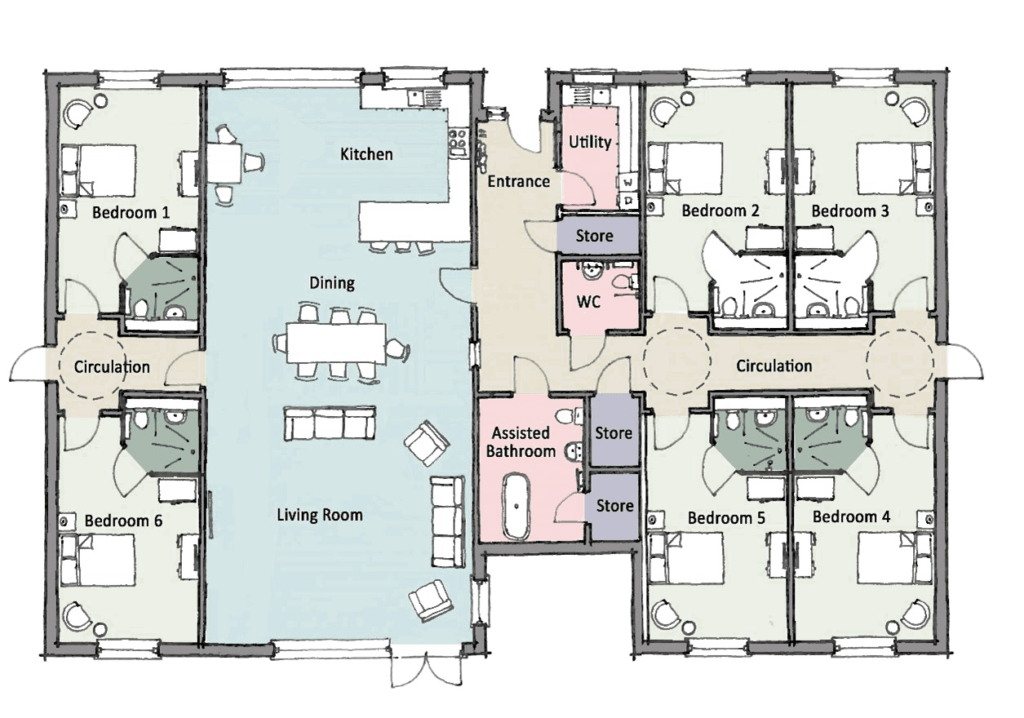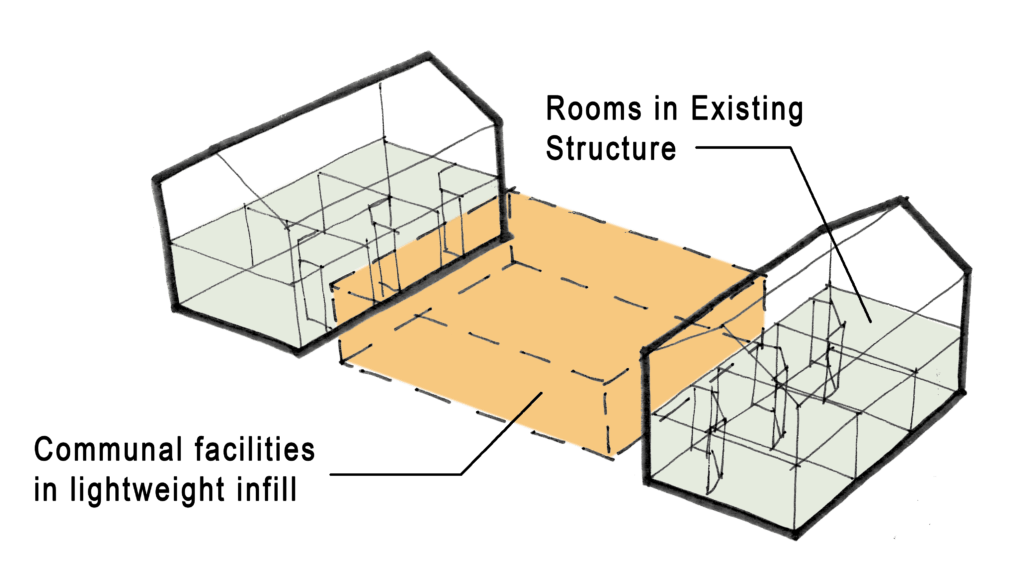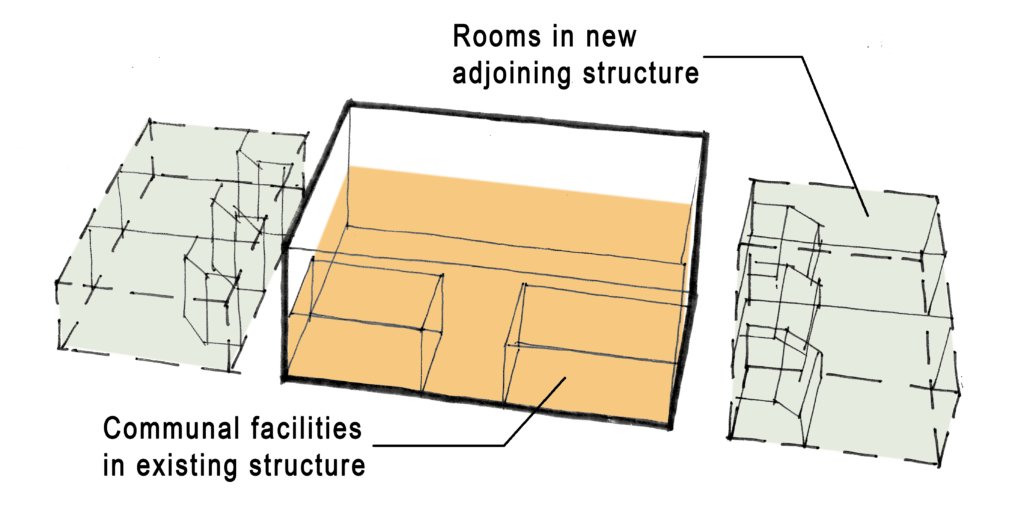Examining Hogeweyk
In terms of construction the household model allows for the use of more sustainable lower cost construction techniques working to domestic building standards. This offers more flexibility to meet local planning criteria and potentially eliminates the need for commercial kitchens, laundries and plant rooms to be included in the project.
In the household model residents live in familiar domestic surroundings supported by two permanent care staff who provide specialist dementia care. Each household accommodates six to seven residents who, with assistance, manage their own households including washing, cooking and buying groceries from the village supermarket.



Many available building sites are unsuitable for traditional care homes due to their irregular shapes, partial obstructions and restricted access. The household care model can be integrated seamlessly with existing infrastructure making such sites feasible for development into highly individual and successful care facilities.
In terms of construction the household model allows for the use of more sustainable lower cost construction techniques working to domestic building standards. This offers more flexibility to meet local planning criteria and potentially eliminates the need for commercial kitchens, laundries and plant rooms to be included in the project.





